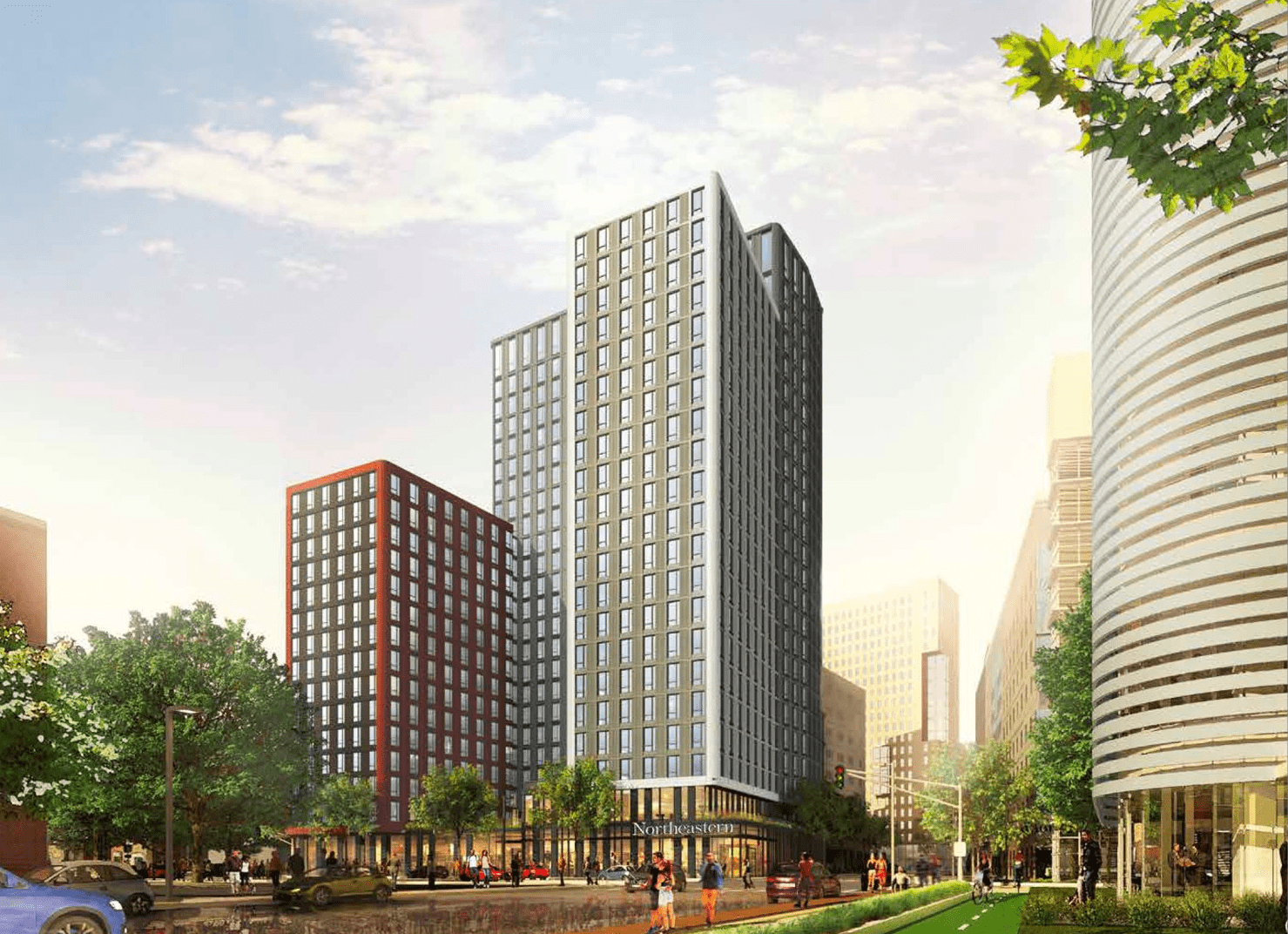840 Columbus Avenue

Communities, the current plan includes 124,000 SF of academic space, nearly 18,000 SF of community gathering and resource space, and 800 beds of student housing. When approved and built, this mixed-use project will support academic goals of the University for innovative learning spaces, community economic development, and fulfillment of Northeastern’s commitment to the City of Boston to deliver 1,000 net new student beds as part of the 2013 Institutional Master Plan.
The community economic development program will occupy the first floor of the building with access from all three sides of the site: Tremont, Melnea Cass and Columbus. In conversation with the community, the many Northeastern programs that focus on education, small business development and social and economic resilience have been developing plans for the space. Floors 2 through 5 will serve as an interdisciplinary hub for innovative teaching and learning with a variety of flexible spaces for changing needs. Starting at the sixth floor the building sets back from the street edges and provides apartments for approximately 800 students. These new beds will address student housing preferences and enable the university to return some of the student housing properties embedded in the Fenway neighborhood to the open market.
The site for the Project lies at the edge of the Northeastern campus in Roxbury and as such offers a unique opportunity to bring together initiatives that share a university and surrounding community purpose. With the site’s history as part of urban renewal, the ground floor program occupying most of the block will be dedicated for partnerships and University programs that support economic development for the neighboring community. The space will house multiple programs that will address critical needs and areas of interest expressed by the community in the following four categories: 1) educational access, 2) jobs and workforce development, 3) small business support, and 4) building capacity for existing community organizations that address economic development.
A joint design workshop was held on April 16th, 2021.
More information about the project, including public presentations, meeting recordings, the Draft Project Impact Report (DPIR), and public comments can be found on the Boston Planning and Development Agency’s project website.
Frequently Asked Questions
Purpose + Partnership
Why is Northeastern proposing to build a mixed-use development that includes student housing at 840 Columbus Avenue?
Why is Northeastern partnering with American Campus Communities (ACC) on the project?
Affordable Housing Impact
How will the project at 840 Columbus Avenue increase affordable housing in the Roxbury and Fenway communities?
How many fewer Northeastern students will live off-campus as a result of the 840 Columbus Avenue development?
How many Northeastern students will live on-campus following completion of the project?
How will units be priced at 840 Columbus Avenue - is it a luxury dorm?
Will construction of student housing at 840 Columbus Avenue affect affordable housing prices in the area?
Why is Northeastern unable to use 840 Columbus Avenue to build affordable housing for the broader community?
Site History + Economic Development Commitment
Does Northeastern own the 840 Columbus Avenue site?
How has Northeastern previously fulfilled the community economic development requirement associated with developing the site?
What are the economic development components of the project?
- An NU Community Ambassador at the Tremont entrance who will help navigate opportunities at Northeastern including educational access, procurement, and jobs;
- Prime street-level space for an anchor café and pop-up business in a small-scale market with professional network supports and subsidized space; and
- Space for co-creation and learning between Northeastern neighbors and faculty, staff and students (ex: skills workshops, community engaged teaching and learning).
How is Northeastern demonstrating its commitment to community economic development prior to completion of the 840 Columbus Avenue project?
- Creating a centralized resource and expanding local outreach to improve access to Northeastern scholarship opportunities;
- Creating a Northeastern Co-op for Good program in which Northeastern funds student co-ops to work with community-based organizations on community economic development work; and
- Northeastern and ACC are providing space and support for a local Black-owned and woman-owned café that will itself incorporate and support local artists.
Community Benefits
What additional community benefits will the project provide?
Project Design
How was the size and shape of the project determined?
Community Engagement
Which community stakeholders has Northeastern engaged about the project?
How can community members get involved and share their questions or concerns?
Have students been involved in the project? How can they share their questions and concerns?
Where is 840 Columbus Avenue?
Click here for a map and directions.
Questions?
If you’d like to learn more about upcoming meetings, project details or other matters related to 840 Columbus Avenue, please reach out to John Tobin of Northeastern University by using the button below.
